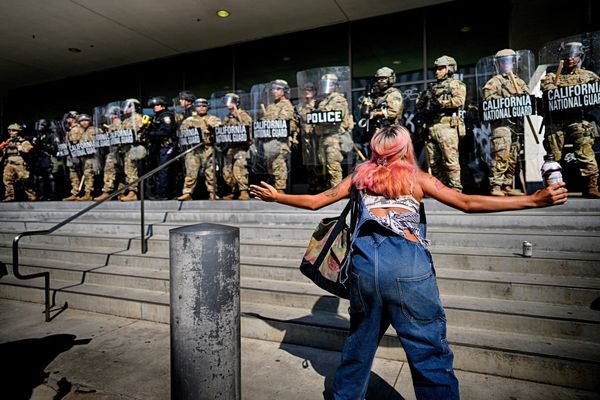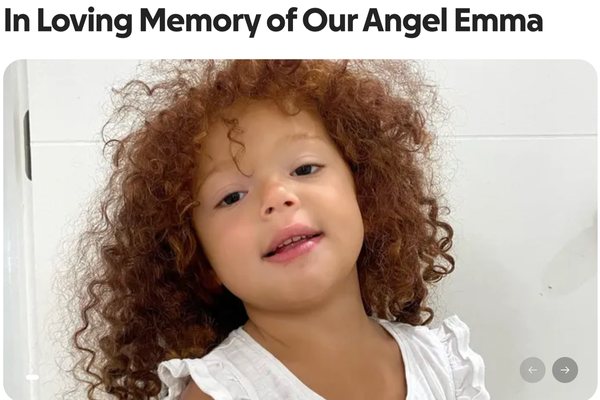
In 2014, during a mid-November regular-season game against Sacramento, Mike Conley heard something unfamiliar barked in his direction: “Technical foul.” The then Grizzlies guard, seven-plus years into his pro career, had never been whistled for a tech and he was convinced that whatever he said in the direction of referee Monty McCutchen—“It wasn’t anything more than, ‘What?’ ” Conley says—didn’t warrant the response. The NBA agreed, rescinding the technical the next day. “You could kind of tell in the moment that we both knew it probably shouldn’t have happened,” says Conley. McCutchen, who retired in 2017 and is now the NBA’s head of development and training for referee operations, agrees. “It was,” says McCutchen, smiling at the memory, “one of those nights.”
It goes without saying—or at least it should—that NBA officials are elite. For all the bellyaching about the block/charge or the occasional out-of-bounds play, referees regularly get calls right. The NBA doesn’t release all of its accuracy numbers, but McCutchen says that errors are down year over year and that the 2024–25 season was “a successful year.” Unsportsmanlike technicals—defined seven ways in Section V of the Fouls and Penalties portion of the NBA rule book, including “disrespectfully addressing an official”—have declined. During the ’21–22 season, referees handed out 1,136 techs. Last season, that number was 889.

And the majority of interactions between officials and players and coaches are harmless. Friendly, even. Don Nelson telling Duke Callahan, “If you let me walk around as much as you did [Allen] Iverson I’d still be playing.” (Callahan’s response: “You think?”) Ronnie Garretson telling Chucky Atkins after a scoring outburst, “Don’t take this the wrong way, but I didn’t know you were that good.” Mark Wunderlich once gave a tech to Rockets guard Rafer Alston in the first half of a game after Alston threw a ball at him. At halftime, Houston coach Jeff Van Gundy noted the number of turnovers Alston had committed. “He said, ‘You’ve been watching him play,’ ” says Wunderlich, who retired in 2011. “ ‘You think he knows where he’s throwing the ball?’ ”
McCutchen has his own story. He once slapped a technical on a very well-known center who, irate, turned and called him a “white racist honky motherf---er.” Years later, while attending NBA All-Star weekend, McCutchen crossed paths with the player in an elevator. McCutchen was with his wife … who is Black. The big man, remembering the exchange, turned to McCutchen’s wife and said, “Don’t believe anything he says. I never said that.”
Sometimes, though, interactions can turn ugly, often in a public way. Draymond Green, the NBA’s ref critic-in-chief, was caught on camera late in Game 3 of Golden State’s second-round playoff series suggesting the referees were calling fouls in order to cover a spread. In March 2023, Rockets guard Fred VanVleet said, “I think that most nights, out of the three [referees], there’s one or two that just f--- the game up.” Then last November, he was tossed for pointing at each official and telling them, “You suck.” A few weeks later, Timberwolves star Anthony Edwards called a crew “f---ing terrible.” The player who finished second to Edwards last year in technicals, Dillon Brooks (now with Phoenix), said in December 2023 that referee Suyash Mehta “shouldn’t even be reffing our games” after Mehta ejected him following a profane tirade over a flopping call.
The most notable—and most visible—player-referee spat is between Chris Paul and Scott Foster. The 12-time All-Star has had several visible run-ins with Foster and has called the beef “personal.” It’s contributed to a perception that Foster is a bad ref, one the league, which regularly ranks Foster among its top officials, says is not based in fact. And it’s made Foster a target of fan ire. Consider: After some shaky calls in Game 4 of last year’s NBA Finals, Foster received a flood of online criticism, so much that Indiana coach Rick Carlisle defended Foster before Game 5. “I have yet to see [a referee] who believes they are bigger than the game,” says McCutchen. “Referees want to do a good job; they want to get plays called correctly and they would prefer not to be part of the narrative.”
The relationship between players and referees needs work, says Morgan Cato, the executive vice president of player operations at the NBPA. In her role, Cato regularly speaks to players about officiating. “When we get feedback, [we find that] communication and interaction are a big area of focus,” says Cato. “Mostly it’s the behaviors they don’t like to see. The dismissiveness. The curt hand gesture or the resistance to make eye contact. Mutual respect is what they are looking for.”

For coaches, it’s clarity. Last April, after Luka Doncic was ejected from a late-season game against Oklahoma City, Thunder coach Mark Daigneault waved referee J.T. Orr over to ask what the Lakers’ star did to earn it. Orr, Daigneault immediately recalled, had slapped the player with a technical weeks earlier, in Sacramento, and Daigneault wanted to bank in his mental file what he couldn’t say. “I always ask the officials what they say,” says Daigneault. “Because I’m trying to calibrate where the line is.”
For the league, addressing these issues is a priority. Commissioner Adam Silver says he has had “intensive conversations” with players association executive director Andre Iguodala about the state of the player-referee dynamic. He’s sought real-time feedback from players and coaches about interactions. “On one hand, I think the state of the relationship between players and referees has been as good as any time during my tenure as commissioner,” says Silver. “On the other hand, I also think there’s room for improvement on how players and referees interact on the floor.”
After 30-plus years in officiating, McCutchen is a fierce defender of referees, though he acknowledges effective communication is a work in progress. “We work really hard to get our staff to understand that no communication is as bad as bad communication,” says McCutchen. With consequences. On-court clashes can fuel the perception of bias, which hurts the game. It can also put referees in the literal crosshairs: Families of officials have been threatened on social media. According to McCutchen, on several occasions police have been called to protect referees’ homes. Finding ways to take down the temperature is in everyone’s best interest.
More than a decade after his first technical foul was rescinded—and 18 years, 1,280 games (including playoffs) and 40,218 minutes into his NBA career—Conley still has not picked up another one. It has made him something of a referee whisperer. “I just think it’s my personality,” says Conley. “Even when there’s heated moments, I can calm myself to talk in the right way instead of getting degrading or calling names, getting crazy.”
How you initiate the conversation is key, says Conley. Temperament matters. “Don’t go in hot,” he says. Knowing there is nothing that will change the call, point to similar contact happening at the other end. And know when the conversation is over. “The more you talk, the more you are getting on somebody like that, the more likely they are probably not going to do what you want them to do,” says Conley. “So it just becomes that kind of dialogue when you’re talking to them.”
Recognizing when to initiate a conversation is equally important. Live ball situations are out. “Too much going on,” says Callahan, who retired in 2019. Halftime is an ideal opportunity for a back-and-forth. “We look at plays at halftime,” says Wunderlich. “And we can give an honest response.” Dead ball situations are fine—to a point. “I didn’t care if a player talked to me all night long,” says McCutchen. “But if you are complaining on every call, I have to put an end to it. We have to be able to concentrate and do our work.”
While referees are after a more civilized discourse, so are the people they’re talking to. “Players just want the communication to be at the utmost level,” says Hornets forward Grant Williams, a vice president of the players association. “That way, they trust the official is going to make the call that they’re supposed to make.” In 2024, the NBA named Ariel Bernstein, an organizational psychologist, as its director of referee performance and development. Bernstein’s objective, says McCutchen, is to improve how officials communicate. “It starts with explaining yourself through the rule book,” says McCutchen. Bernstein has coached refs to listen, maintain eye contact and to make players feel heard. “As a referee, you don’t need the last word and you definitely don’t have to ‘win,’ ” says Wunderlich, now a VP of referee operations. “Only thing you have to do is get people back to playing.”

Referees, notes Silver, are “following the rules and the interpretation set forth by the league office.” There are certain actions they have to call. Wave your hand at an official? That’s a tech. Clap at one? That’s another. Slap the stanchion in frustration. You are going to get whistled. These are rules that are constantly evolving. For example: Silver says the league recognizes the need to allow players to show more emotion without fear of getting T’d up for it. “I think we may have gotten to a point where we had disallowed some of the spontaneous emotion on the floor and created some bright line leading to technicals that I think were not necessary to control the game and not the official’s fault,” says Silver. “I think that’s the league office’s fault.”
What can trigger incidents is what players see as a lack of consistency. “What we are hearing is, ‘Night after night, no matter who the crew is, can I make sure I’m going to get consistent calls?’ ” says the NBPA’s Cato. “No matter who the official is, young or old, in the East or West, can I have consistency?”
A particular pain point is how postseason games often are called by a different rule book. “The games are called differently,” says Conley. “Early in the year you might get a lot more ticky-tack calls, more free throws that are based off of points of emphasis for that particular year. And then halfway through the year, the point of emphasis isn’t emphasized and they go back to a little bit more of what we’re used to. And then you get closer to the playoffs, and now you’re tackling each other and clotheslining each other and some things aren’t being called.
“It’s like, At what level are we trying to get used to knowing what we can and can’t get away with? Guys are really good at manipulating the game and whatever the rules are at the time, and you just build around it as opposed to constantly changing and not knowing what you’re getting.”
To that end, players have pushed for a voice in which officials work the playoffs. Currently the NBA chooses the 36 postseason referees based on the league’s grading system and other metrics. That list is whittled to 12 for the Finals. Cato says there has been “good movement” towards developing a process that allows the rank and file to have input in the selections. “I think there’s value in it,” says Williams. “Because then if we complain about [referees], the league can say, ‘Hey, you had a seat at the table.’ ”
There will always be incidents. Mis-takes will happen, like McCutchen’s quick whistle on Conley years ago. “I hit Avery Johnson, too, by the way,” says McCutchen, laughing. “Another nice guy.” The goal is to get to a place of constructive dialogue that minimizes them. “Cracking the code,” says McCutchen, “is really as simple as learning how to disagree.”
More NBA on Sports Illustrated
Listen to SI’s NBA podcast, Open Floor, below or on Apple and Spotify. Watch the show on SI’s YouTube channel.
This article was originally published on www.si.com as A Look Behind the NBA’s Curtain at Player-Ref Dynamics.







